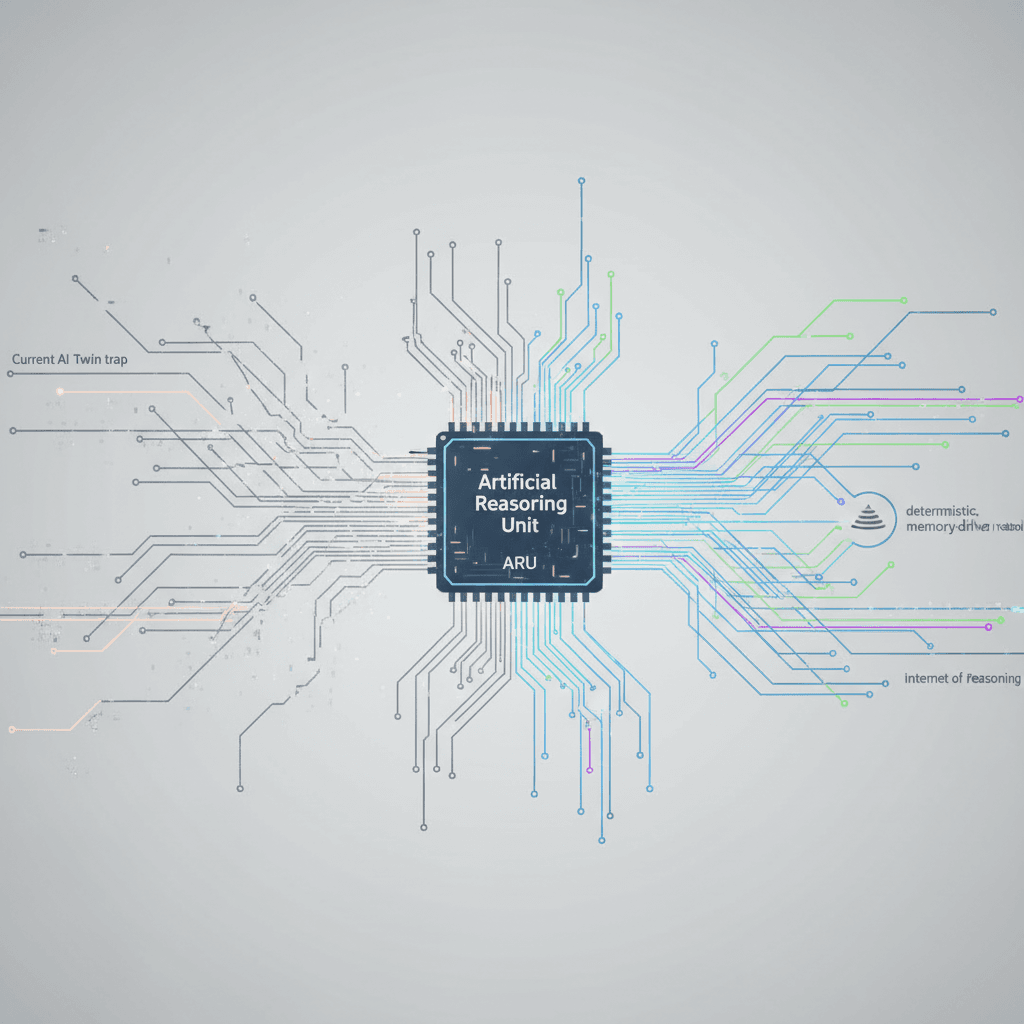Counterintuitive's ARU Chip Unlocks Genuine AI Reasoning Beyond GPUs
Counterintuitive's ARUs target AI's "twin trap," promising a post-GPU era of verifiable, memory-driven reasoning beyond probabilistic mimicry.
October 29, 2025

In a bold move to reshape the foundations of artificial intelligence, startup Counterintuitive has emerged from stealth with a mission to build "reasoning-native computing." The company aims to move AI beyond its current state of sophisticated mimicry toward genuine comprehension and auditable reasoning. Central to this ambition is a new category of chip, the Artificial Reasoning Unit (ARU), designed to solve what the company has termed the AI "twin trap"—a pair of fundamental limitations that prevent even the largest of today's models from being truly intelligent, efficient, and stable. This new approach could usher in a post-GPU era, paving the way for systems that can understand and make decisions with verifiable logic, a profound shift from the probabilistic pattern matching that defines modern AI.
The core problem Counterintuitive seeks to solve is this "twin trap," which consists of two interconnected flaws in the current AI paradigm. The first trap is "precision without truth."[1][2][3] Contemporary AI systems are built upon floating-point arithmetic, a mathematical foundation developed decades ago primarily for speed in graphics and gaming, not for logical consistency.[3][4] Each calculation in these systems introduces minuscule rounding errors that can accumulate over time, an issue known as rounding drift.[1][2] This means running the same complex computation twice can yield different results, a phenomenon called non-determinism. This inherent instability undermines the ability to audit and verify AI decisions, which is a critical barrier to trust in high-stakes fields like finance, healthcare, and national security.[1][5] When AI outputs cannot be logically proven or explained, they are often labeled as "hallucinations."[1][3] Counterintuitive argues this has created an invisible wall, leading to a physics ceiling where silicon miniaturization can no longer fix unstable math, a compute ceiling where adding more chips multiplies inconsistency, and an energy and capital ceiling due to the massive resources wasted on correcting this computational noise.[1][4]
The second, equally critical trap is "reasoning without memory."[1][4] Current AI models, including large language models, are architecturally memoryless.[1] They are designed to predict the next word, pixel, or frame in a sequence without retaining the logical steps that led to that prediction.[2][3] Each output effectively overwrites its own underlying logic, resulting in what appears to be fluent reasoning but is merely a sophisticated imitation of it.[1][3] The models can't revisit, build upon, or verify their own chain of thought because no such chain is durably recorded. This lack of memory is a primary reason why today's AI systems struggle with reproducibility and genuine problem-solving, instead operating in a constant loop of imitation that is enormously energy-intensive and requires massive capital investment for training.[2][6] It is the combination of these two traps, the company asserts, that holds AI back from its full potential.
To escape this trap, Counterintuitive is developing a completely new hardware and software stack, centered on its flagship Artificial Reasoning Unit (ARU).[3] The ARU is not merely an incremental improvement on existing processors like GPUs; it is being engineered as a new class of compute designed specifically for deterministic, memory-driven reasoning.[1][2] Unlike GPUs, which are optimized for parallel probabilistic calculations, ARUs are being architected to execute causal logic, memory lineage, and verifiable deduction directly in silicon.[2] This marks a fundamental departure from floating-point arithmetic toward a system that can produce consistent, reproducible results. Complementing the hardware is a full-stack reasoning software designed to create a unified framework where the logic behind every output is traceable and auditable.[1][6] As co-founder Syam Appala explained, "Our ARU stack is more than a new chip category being developed — it's a clean break from probabilistic computing."[2][3]
This ambitious undertaking is backed by a team of mathematicians, computer scientists, physicists, and engineers from top-tier global research labs and technology companies.[6] Under the leadership of Chairman Gerard Rego, the team has already filed for more than 80 patents spanning its deterministic reasoning hardware, causal memory systems, and software frameworks.[1][6] The company’s vision extends beyond a single chip to pioneering what it calls the "internet of reasoning"—a new global compute fabric that replaces random, stochastic imitation with deterministic causal logic.[1][6] The goal is to deliver intelligence that is not only powerful but also energy-efficient, reproducible, and epistemically trustworthy.[1]
If Counterintuitive succeeds, the implications for the AI industry and society at large could be transformative. By rebuilding computing from its foundation of probability to one of causality, the company aims to unlock AI applications in the most critical sectors of the economy without the prohibitive costs associated with massive data centers and energy consumption.[2][3] This shift could provide a pathway to more reliable and ethical AI systems, moving the field away from opaque black boxes and toward transparent, auditable tools capable of genuine understanding.[6] The journey from probabilistic mimicry to deterministic reasoning is a monumental challenge, but it represents a potential leap toward machines that don't just process information, but truly comprehend it.